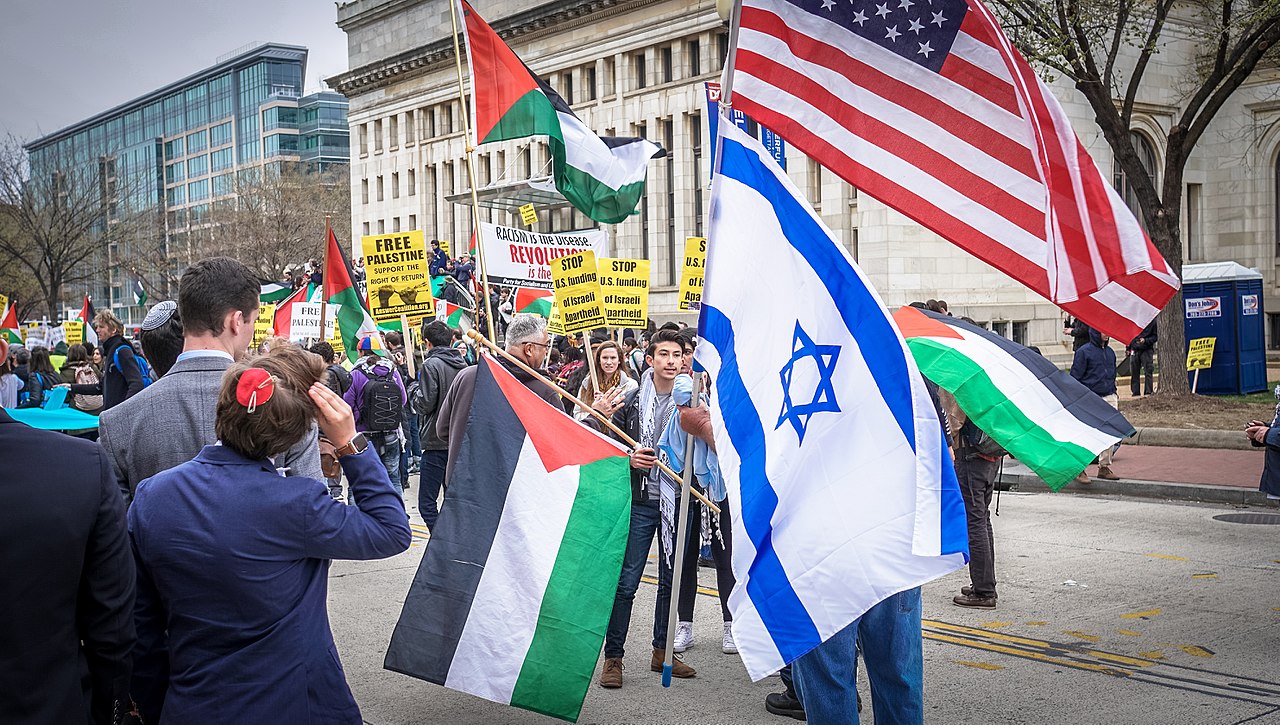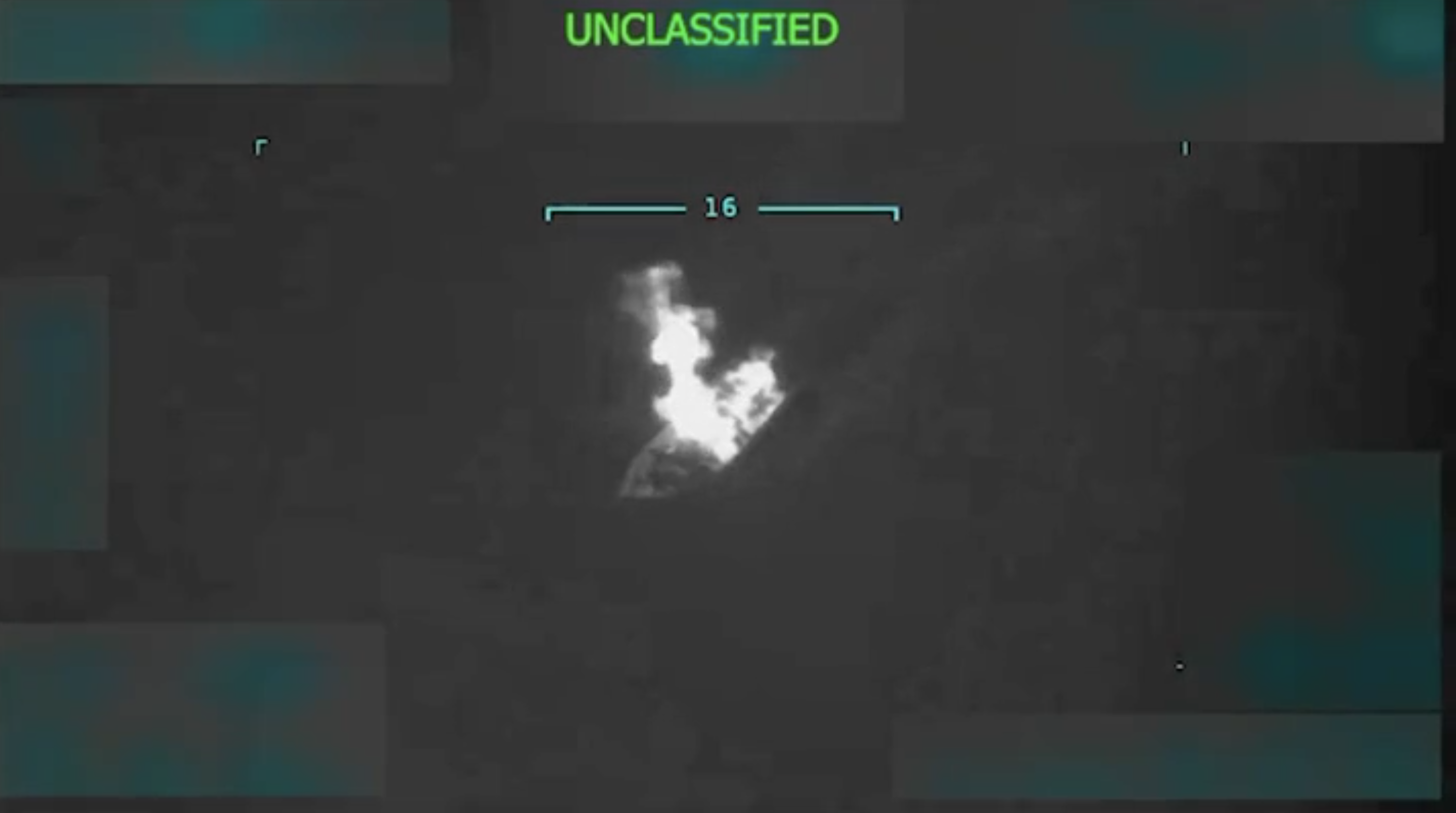How the Israel-Hamas War Fuels Extremism in the U.S. and Beyond

Published by The Lawfare Institute
in Cooperation With

Less than 10 days after Hamas’s attack on Oct. 7, 2023, Joseph Czuba, a 71-year-old Chicago-based landlord, approached his downstairs Muslim tenants to express his anger about current events in the Middle East. The tenants, 32-year-old Hanaan Shahin and her six-year-old son, were alone when Czuba knocked on their door. Hanaan tried to calm her neighbor by asking for prayers for peace. Before she knew it, she was fighting for her life as Czuba tried to stab her. Wounded, she was able to escape into a bedroom. While she was calling for help, Czuba went after her son, stabbing him 26 times with a 7-inch serrated military-grade knife.
The hate crime in Chicago was preceded by Jewish and Muslim community voices across the United States expressing concern for the overall rise in hate acts even before Oct. 7. Since then, the war involving Hamas and Israel has spilled over in the United States, similar to experiences in Europe. Developments in the United States coincide with European countries raising their domestic threat levels as a result of the Israel-Hamas conflict, including France, Belgium, Spain, Austria, and others. While the experiences of the United States mirror European counterparts in many ways, they also diverge in a fundamental way. Extremists in the United States find unparalleled protections to spread their message and mobilize others. The threat of more intense polarization and expanding radicalization in the United States is even more acute in light of sociopolitical tensions in the run-up to the 2024 presidential election. The rise in anti-Jewish and anti-Arab/Muslim incidents online and in communities across the United States provides fertile ground for extremists to spread and act based on their beliefs.
A New Breed of Extremism
On Dec. 5, 2023, FBI Director Christopher Wray mentioned that since Oct. 7, the FBI had initiated 60 percent more hate crime investigations while continuing to elevate hate crimes to “national-threat” priority. On Dec. 12, 2023, the FBI followed up with a public service announcement alerting of a heightened likelihood of violence since Oct. 7. While pointing out the increased calls by extremist organizations for direct action by sympathizers, such as potential stabbings, mass shootings, and detonation of improvised explosive devices, the announcement clarified that the alert was not in response to any specific plotting activity. Rather, the FBI warned that the broad range of extremist ideologies that have found greater space since the Oct. 7 attack may galvanize “lone actors [who] may seek to disrupt or escalate violence at large gatherings, high profile events, or symbolic or religious locations throughout the winter.” Such gatherings, the FBI further warned, “could become a convenient target for those inspired to commit violence against Jewish, Christian, Muslim, and Arab communities.” Similarly, Deputy Attorney General Lisa Monaco updated the public on Dec. 24, 2023, that the Justice Department received over 1,800 hate crime-related reports since Oct. 7 and that the threat of extremism today has shifted considerably compared to the nature of extremism since the 9/11 attacks.
The new breed of extremism that Monaco has noticed spreading since Oct. 7 is one that existed before the current war in the Middle East, though the recent outbreak of war exacerbated it. For instance, of the 22 fatal incidents related to extremism in the U.S. since the Jan. 6 insurrection, involving the deaths of 44 victims and 11 attackers, most were attributed to assailants who expressed beliefs associated with the extreme right. Reuters recently examined the history of 15 assailants who had disclosed the sources of their radicalization. None had official membership in extremist groups or adhered to a single, distinct ideology. At least half combined white supremacist and anti-Jewish views. Others combined anti-government and homophobic dispositions. The majority were influenced online and shared an apocalyptic view of the world. In line with this, in its analysis of hate incidents and bias crime data from the year 2022, the Oregon Criminal Justice Commission revealed that more than half (55 percent) of total reports to Oregon’s statewide Bias Response Hotline were not related to extremist groups. This new extremism that Monaco highlights is characterized by the ideological ambiguity of its adherents and the flexibility of their organizational affiliations. Pulling from a hodgepodge of exclusionary beliefs, neo-extremists combine selective outrage against segments of society with conspiracy theories about government to promote political and social imaginaries of a doomed world. Accordingly, violence against specific groups is promoted as the only possible path to halt the decline of a once-dominant and virtuous social order that the government and state are unable or unwilling to protect.
Reports and analyses from MI5 in the U.K. reach similar conclusions: The threat of violent extremism in the U.K. since Oct. 7 does not stem from organized groups. This is pertinent in assessing the threat that Hamas poses to the United States domestically as the group differs from other terrorist organizations such as al-Qaeda and the Islamic State, which have historically demonstrated a global outlook and targeting of the Western world beyond their geographic base. Hamas, by contrast, has had a history of localized, restricted military ambitions, despite key figures from its political leadership having to reside abroad. One potential consequence of the war in Gaza is the transformation of Hamas’s organizational structure and operational methods towards a more regionally scattered and decentralized format. Whether this can translate into Hamas targeting Israeli interests or allies abroad remains speculative. As stated by the FBI, the primary threat of violent extremism inside the U.S. remains home-grown thus far. Foreign threats, however, are not absent. Besides Hamas, U.S. adversaries such as Iran and its affiliates have already begun intensifying the targeting of U.S. presence in the Middle East. This was evident in the words of the leader of the Lebanese Hezbollah, Hasan Nasrallah, on Nov. 3, 2023, blaming the United States for the war in Gaza when addressing constituents. “The United States is totally responsible for the war raging in Gaza, against unarmed defenseless people,” he said.
U.S.-Specific Challenges
Similar to trends in Europe, anti-Jewish and anti-Muslim/Arab incidents in the United States include both acts of hate speech as well as crimes such as stabbings. London police stated that between Oct. 1 and Oct. 18, 2023, there had been 218 anti-Jewish offenses, compared to 15 in the same period in 2022. Islamophobic offenses in the same period were up from 42 (2022) to 101 (2023). Reporting systems, such as those in the U.K., account for hate crimes as well as what is known in parts of the United States as hate incidents, such as hate speech that abuses others based on identity without engaging in criminal conduct such as assault. This makes the reporting system in places like the U.K. specifically equipped to act as a canary in the coal mine, providing an early warning system to heightened social unrest and the targeting of specific groups. National systems of reporting and data collection in the United States, by contrast, largely dismiss noncriminal conduct, and accountability measures remain elusive.
Hate incidents involving speech or any expression of animus based on protected class are not included in federal reporting systems such as those released annually by the FBI. Hate incidents and the nationwide scale of post-Oct. 7-related bigotry remain underreported for this reason. This also implies that not all public bodies have adequate response mechanisms when incidents of hate speech are reported to law enforcement as they are treated as constitutionally protected acts under First Amendment prohibitions on government from infringing on the freedom of expression. From a legal standpoint, it is not the government’s role to protect feelings. This makes one person’s freedom of expression another person’s burden to live in fear and humiliation. The global spillover of the Israel-Hamas war and the rise of anti-Jewish and anti-Muslim/Arab bigotry is particularly suitable for extremists in the United States because, regardless of the target of hatred, whether Jew, Arab, or Muslim, extremists in the United States find unparalleled protections to propagate their message, absorb new potential audiences, and polarize the public.
In the United States, where heightened standards apply to the criminality of any expressive conduct, hate speech, which can include language as menacing as “I’m going to kill you and your family” or “I’m going to skin you alive,” rarely meets the threshold of criminality. The specific matter of menacing speech was addressed on Jan. 25, 2023, by the Court of Appeals of the State of Oregon in State v. Hejazi. Although the investigating law enforcement officer, prosecutors, and the jury determined that the language mentioned above warranted the charge of menacing under state laws, the court of appeals reversed the decision by stating: “[W]e conclude that the record lacks evidence showing that defendant’s threat was imminent.” To explain “imminency,” the court cited State v. Dompeling (2000) and State v. C.S. (2015): “[A]lthough we do not doubt that defendant’s conduct incited alarm and fear and was undoubtedly disturbing …, a conviction for the charge of menacing requires more. … The harm [must be] moments away.”
In the same vein, the American Civil Liberties Union (ACLU) has historically echoed the U.S. Supreme Court’s stance in Brandenburg v. Ohio (1969) that hate speech can be neither restrained nor punished unless it “is directed to inciting or producing imminent lawless action and is likely to incite or produce such action.” In clarifying the meaning of imminent action, the ACLU explains that inciting direct action requires an audience to have already acted illegally by directly carrying out what a speaker explicitly demanded. Such measures can be applied only for punitive purposes rather than for prevention. Furthermore, violent reactions to hate speech by individuals or groups taking insult or offense are irrelevant to deliberations whether a specific form of speech incites violence: “Hostile crowds must not be allowed to exercise a veto power over the speech of others by themselves creating a clear and present danger or disorder. Otherwise any of us could be silenced if people who did not like our ideas decided to start a riot,” the ACLU explains. This very same legal instrument allowed civil rights activists such as Martin Luther King Jr. to mobilize in hostile environments, as well as Ku Klux Klan and Nazi leaders to mobilize against civil rights activists. The byproduct of the virtually absolute provisions of free speech in the United States is the forever encouragement of polarization by surrendering the responsibility of countering extremism to counterprotesters and trusting law enforcement to intervene effectively when confrontations become violent.
Implications for 2024
Scholars of political violence argue that polarization is a favorable condition for increased mass mobilization despite not being the sole factor leading radicalized individuals to act based on their beliefs. The spillover effect in the United States is already visible through violent acts by radicalized individuals as well as patterns of increased mass mobilization. What we are now witnessing might be a prototype of future patterns of extremism manifesting based on opportunities offered by the sociopolitical environment rather than being expressions of plotted or planned activism. This is now the backdrop heading into an already-charged 2024 presidential election year. Judging by the rhetoric of candidates, the 2024 presidential election promises to carry the same tensions as the previous two election cycles. This adds to the tensions and unpredictability of confrontations between protesters and counterprotesters regardless of political platform.
The incidents during the “Free Palestine Rally and March” in Eugene, Oregon, on Oct. 21, 2023, are a case in point. Two hundred community members came together to express solidarity with Palestinians. Thirty minutes into the march, a white truck brandishing multiple right-wing flags, including the Gadsden, blocked the march. The masked driver, 51-year-old Jonathan James Wisbey, blocked an intersection and then pulled a handgun as he exited his vehicle. He started shooting, and protesters scattered in panic. Many were trampled, sustaining injuries that required surgery. Before police arrived at the scene, two armed individuals from the march confronted Wisbey. It turned out Wisbey’s handgun was fake and shot only paintballs, but one can recognize the challenges facing law enforcement operating in the given conditions and how the situation in Eugene could have turned lethal with or without the involvement of law enforcement.
The case was forwarded to local municipal court for potential charges against Wisbey. The Lane County District Attorney’s Office shared via telephone that there was not enough evidence for charges of bias crimes to be filed. This hints at the difficulty prosecutors have proving bias in a court of law. While the police report remains unavailable to the public at the time of writing this article, the challenges of prosecuting bias crimes has been the focus of much debate and Wisbey’s case does not stand alone. In Wisbey’s case, unless he made a specific statement about a victim’s protected class (which, according to Oregon state law, could include race, color, gender identity, sexual orientation, disability status, religion, or national origin) as he targeted protestors, there would be no conclusive evidence of a bias crime because targeting based on political views does not meet the criteria of hate crime. Given that federal laws require either a higher threshold or specific conditions for federal authorities to take over an investigation, holding perpetrators of hate and bias accountable for hate crimes relies largely on state-level criminal laws, which are fundamentally constrained due to the heightened standards of proof to establish the criminality of any expressive conduct, including hate speech.
What Can Be Done?
In a recent article, researchers Jessica Stern and Bessel van der Kolk argue that constructive engagement in the Israel-Hamas conflict requires a psychologically informed response. They argue that “[p]eople who live in a state of existential anxiety are prone to dehumanizing others. Hamas, for instance, calls Israelis ‘infidels,’ while the Israeli Defense Minister Yoav Gallant has referred to members of Hamas as ‘human animals,’ and both sides have called the other ‘Nazis.’ Such dehumanizing language makes it easier to overcome inhibitions against committing atrocities.” The spillover effect in its polarizing tendencies extends mutual dehumanization beyond individuals and groups directly impacted by the conflict in the Middle East and further entrenches mutually exclusive principled oppositions. Inversely, this implies that trauma-informed response mechanisms would take us in the opposite direction.
One example of trauma-informed response mechanisms by a public body is the Bias Response Program at the Oregon Department of Justice, which provides legislative and programmatic innovations that are a model for the nation. Introduced through Senate Bill 577 in 2019, the state of Oregon kick-started a Bias Response Hotline, hired trauma-informed civil rights advocates, introduced the term “bias incident” for purposes of documentation, mandated data consolidation by District Attorney’s Offices and law enforcement agencies, and provided survivor-centered safety planning and emergency funds. The funds are intended to address stabilization needs, such as relocation or security cameras, in the wake of bias-motivated targeting as well as to cover counseling costs for victims of hate through the state’s Crime Victim and Survivor Services Division. As a policy directive, similar programs should proliferate and need to be adequately supported, sufficiently equipped, and strategically stationed to meet the increased level of local needs. This would also reduce the burden on law enforcement by creating parallel support systems specialized in noncriminal cases involving hate speech or bias incidents.
Fundamentally, bias response programs similar to that of the Civil Rights Unit at the Oregon Department of Justice would tame cycles of polarization by providing safety planning and support to individuals impacted by noncriminal hate acts that cause harm, raise concern for safety, and foment anger. In addition, rather than a stance of neutrality by public bodies due to restrictions on government infringement on free speech, this would enable public bodies to stand in solidarity and support with victims and community members impacted by hate even when the criminal justice system is unable to hold extremists accountable.
From a national security perspective, it is imperative for law enforcement agencies to be prepared for escalatory tactics by extremists during mass gatherings of political or cultural nature. Equally important for law enforcement agencies is to appreciate the impact of hate incidents, not only hate crimes, and to have access to training and resources to respond appropriately. In addition, given the favorable conditions for the rise of extremism heading into the 2024 presidential election, foreign influence will likely strive to further polarize and fuel extremism within the American public to undermine domestic social cohesion, reminiscent of strategies witnessed in previous presidential campaigns as detailed by the National Intelligence Council. Cybersecurity, foreign threats, and countering misinformation on online platforms all require robust systems of coordination and information sharing between private and public agencies at federal, state, and sub-state levels.




